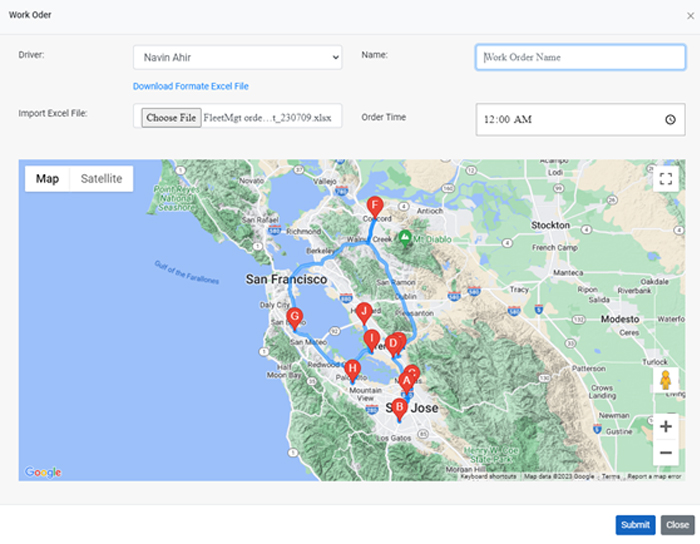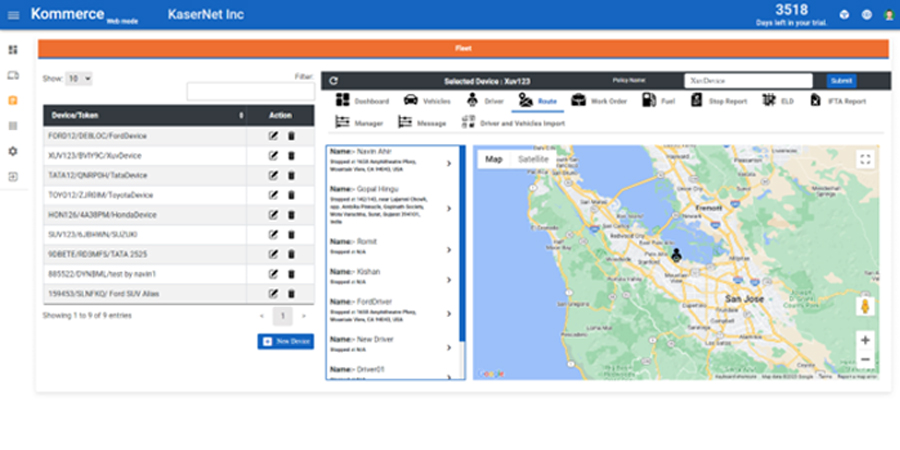Productivity : AI routing and dispatching
Import task or delivery details: Input all the necessary details for each task or delivery into the planning system. This includes information such as deadlines, resources required, dependencies, and any specific instructions or constraints.
AI-based order routing and dispatching systems bring efficiency and optimization to the process of assigning tasks, managing resources, and fulfilling orders in various industries. Here’s how AI can be applied to enhance order routing and dispatching:
Real-time Decision Making: AI algorithms can analyze real-time data, including current traffic conditions, order urgency, and the availability of resources, to make instant and optimized dispatching decisions.
Dynamic Routing: AI algorithms can dynamically adjust routes based on changing conditions such as traffic congestion, road closures, or weather events. This ensures that drivers take the most efficient path to their destinations.
Automated Task Assignment: AI can automatically assign tasks to the most suitable available resources based on factors like proximity, skill set, and workload. This helps in optimizing resource utilization.


Customer Preferences and Service Level Agreements (SLAs): AI can consider customer preferences and SLAs when making dispatching decisions. For example, it can prioritize certain orders based on delivery time commitments or specific customer requirements.
Communication and Collaboration: AI-based systems can facilitate communication between dispatchers, drivers, and customers, providing real-time updates and notifications. This improves transparency and customer satisfaction.
Resource Optimization: AI can help in balancing workloads among available resources, preventing overloading of certain drivers or vehicles while others are underutilized.
Automated updates: Set up triggers or rules within the planning system to automatically update the schedule when unforeseen changes occur. This could include factors like delays, cancellations, resource unavailability, or changes in priorities. The system should detect these changes and adjust the schedule accordingly, considering dependencies and constraints.
Actual routes: Actual routes represent the paths that drivers take in reality when executing their deliveries or services.
Deviations: Comparing actual routes to planned routes can highlight deviations, such as drivers taking alternative paths, making unscheduled stops, or encountering unforeseen obstacles.
Insights and improvements: Analyzing these deviations helps identify inefficiencies, bottlenecks, or areas where the planned routes can be improved. It allows for adjustments to optimize future routes and minimize deviations.


Long-haul routing : Multi-day long-haul routes refer to transportation routes that span multiple days and cover long distances. These routes are commonly used in logistics and transportation industries, such as trucking, shipping, or freight services. Here are some considerations and key factors involved in managing multi-day long-haul routes:
Route Planning
Optimal route selection: Identify the most efficient and cost-effective routes considering factors like distance, road conditions, traffic patterns, tolls, and regulations.
Rest areas and amenities: Plan for suitable rest areas, truck stops, or accommodations along the route to ensure drivers can rest, refuel, and meet regulatory requirements for breaks.
Time management: Account for estimated travel times, including potential delays, to ensure timely delivery and adherence to schedules.
Regular inspections: Conduct routine vehicle inspections, including pre-trip and post-trip checks, to ensure roadworthiness and address any maintenance issues promptly.
Implementing AI-based order routing and dispatching requires a combination of technologies such as machine learning, geospatial analysis, and real-time data processing. Additionally, user interfaces for dispatchers and drivers should be intuitive and user-friendly to ensure effective utilization of the system. Regular monitoring and fine-tuning of the AI algorithms are essential to maintain optimal performance


